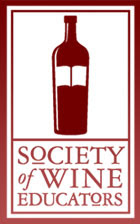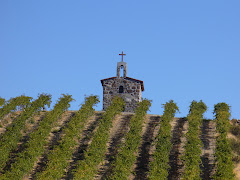 Fermentation, according to my Society of Wine Educators Study Guide, is “a biochemical process involving about thirty successive chemical reactions, each catalyzed by a specific enyme – an organic substance capable of causing a chemical change.” I never imagined while I was falling asleep in my Chem class back in high school, dreaming about Catherine Bach from Dukes of Hazzard, that I would miss out on what would become a surprisingly integral part of my beloved once and future wine career.
Fermentation, according to my Society of Wine Educators Study Guide, is “a biochemical process involving about thirty successive chemical reactions, each catalyzed by a specific enyme – an organic substance capable of causing a chemical change.” I never imagined while I was falling asleep in my Chem class back in high school, dreaming about Catherine Bach from Dukes of Hazzard, that I would miss out on what would become a surprisingly integral part of my beloved once and future wine career.The chemical formula for the fermentation of grapes into wine is C₆H₁₂O₆ + yeast = 2 C₂H₅OH + 2 CO₂. This breaks down as grape sugars converting through the action of the yeasts introduced to the juice into ethanol and carbon dioxide. Also, heat is generated and expelled through this process. It’s easy to forget the simple chemical mechanics of making wine when you’re swirling your favorite red or white amidst friends at a dinner party, but there it is.
The sugar in grapes is measured in degrees (referred to in the U.S. as Brix – in France, it is called Baume, in Germany, Oechsle). Grapes harvested at 24 Brix will result in a wine potentially possessing alcohol of approximately 12%.
Fermentation, according to my guide, is difficult to start if the must (unfermented grape juice) is cooler than 57° F and problematic to control at temperatures above 95° F. Conversion of sugar into alcohol accelerates as the temperatures rise, yet at very high temperatures, the yeasts shut down and die. The irony is that ethanol, created during the fermentation process is actually toxic to the yeasts that help produce it. Warmer fermentations subsequently produce wines of lower total alcohol.
Yeasts have very simple nutritional requirements: sugar, minerals, nitrogen and vitamins – the same we humans need. Yeast cells are anywhere from 25-60% nitrogenous material, they require nitrogen in order to reproduce. Obviously, nitrogen is a key ingredient to a healthy fermentation process.
There are several types of fermentation: carbonic maceration, malolactic fermentation, inoculated fermentation, wild yeast fermentation – each process a different device in the winemaker’s toolbox. While carbonic maceration is simply a process involving the entire cluster of grapes, using all the parts to ferment naturally (a process used primarily in Beaujolais production), and malolactic fermentation is a “secondary” process used to transform malic acid (which is the natural acid in grapes) to lactic or dairy acid (giving the wines a creamy, buttery texture), the initial fermentation processes of inoculated (or cultured) fermentation versus wild yeast fermentation generates pros and cons as well.
Inoculated fermentation gives you a quick start to the process, with a predictable outcome of alcohol, higher alcohol production due to high alcohol-tolerant yeasts, the ability to ferment at lower temperatures, fewer by-products, a resulting clean wine with few off-odors. Wild yeast fermentation however, gives you more acetic acid (lending a rustic tone to the wine), more ethyl acetate (in small amounts, adds complexity), more glycerol, increased phenyl alcohol, H₂S, acetaldehyde, and overall, a less-efficient, less-predictable alcohol production. Sounds like inoculated is the way to go right? Yet there are many winemakers who choose wild yeast fermentation because of the style it creates. It’s almost like a painter choosing oils or acrylics, it all depends on their inner palette (palate).
I think my High School Chemistry teacher would be shocked that I would be so enthralled by chemistry now. I wish I wouldn’t have been daydreaming about girls so much, and I wish I would have paid more attention. Hopefully, Mrs. Osborn would be at least a tiny bit impressed now.











No comments:
Post a Comment